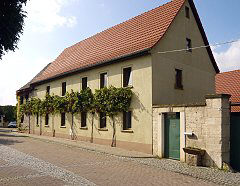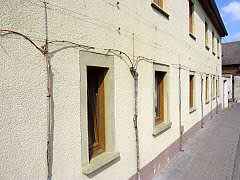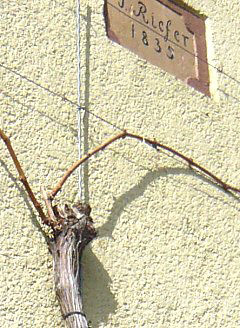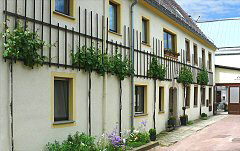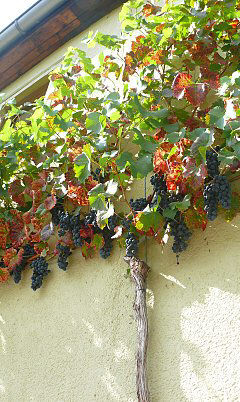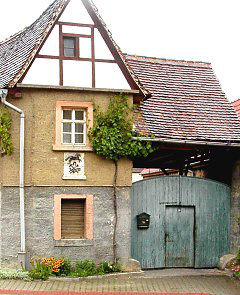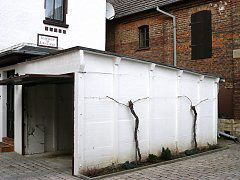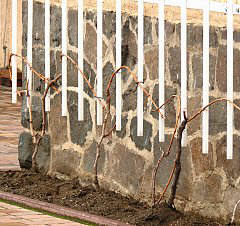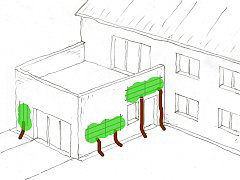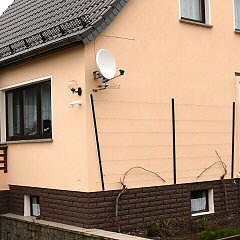Small Espaliers and Espalier Bands
Vineyard-style training methods are also very effective for training grapevines against a wall or facade. This technique lends itself particularly well to small trellises, but works great for longer ribbons of greenery at any height. By planting several vines, a designated greening area can be covered very quickly. The simplicity and efficiency of this training technique makes it preferable to the horizontal cordon.
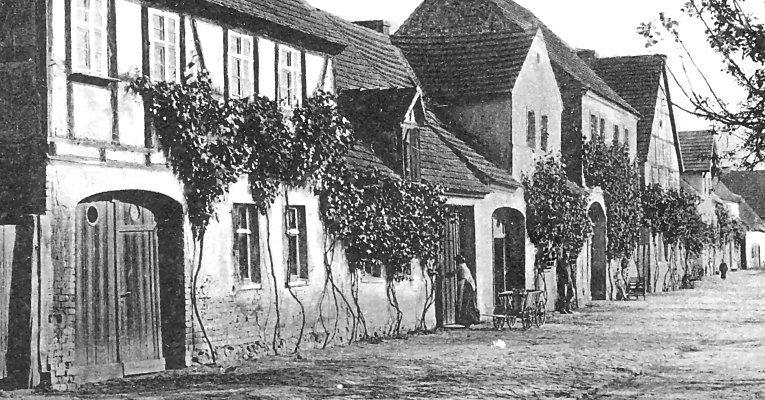
Spatial Requirements
Horizontal espalier 'ribbons' (long, narrow bands of espaliers) require an espalier height of 0.7 - 1.2 metres; that is, the distance between the lowest and highest wire should be at least 70 cm. For aesthetic reasons, we recommend keeping a minimal distance of 25 - 40 cm from house corners, windows, doors, and other wall openings (refer to our Planning Tips). A vine with bilateral (double) canes requires a width of about 1.5 m, and a single cane a width of about 0.8 m. For a cane bent and tied into a bow ("circular cane," see below), the espalier width can be as narrow as 50 cm.
Trellising
Small or narrow, ribbon-like trellises are best; for suitable wire rope systems, refer to grapevines.
Establishing and Pruning
As described for vineyard training: for the usual bilateral arched canes, 3 espalier wires are sufficient. For high espaliers, the vertical main trunk is trained correspondingly high; if growth is rather weak, this training period is extended for another year. For very small or narrow spaces, only one lateral arch is formed and is tied as a circular cane (see sketch below, right).
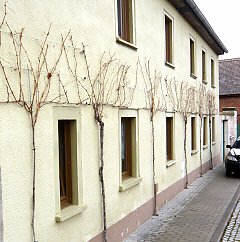
The same espalier "ribbon" as above, before winter pruning, trellis system as per cable system 3050
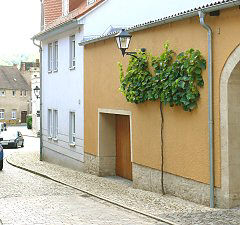
Vine with vineyard training, bilateral slightly-arched canes ("flat arch"), trellis as per 8010
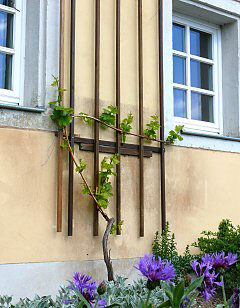
Young vine, bud burst in spring, on a narrow espalier with just a single cordon (one lateral cane); at the bottom right, a replacement spur on the head of the vine
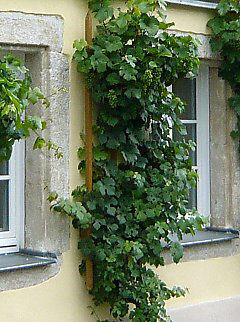
For very narrow espaliers (approx. 50 cm wide), a single lateral cane is formed as a full (circular) arch.
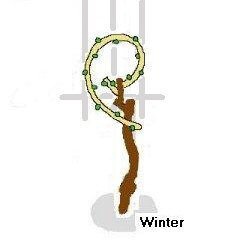
Circular Cane ("full arch"): a cane trained into a circle on a very narrow trellis after pruning, bending, and tying; the staggered heights of the buds ensure that the grapes are better distributed vertically and don't press against each other.

